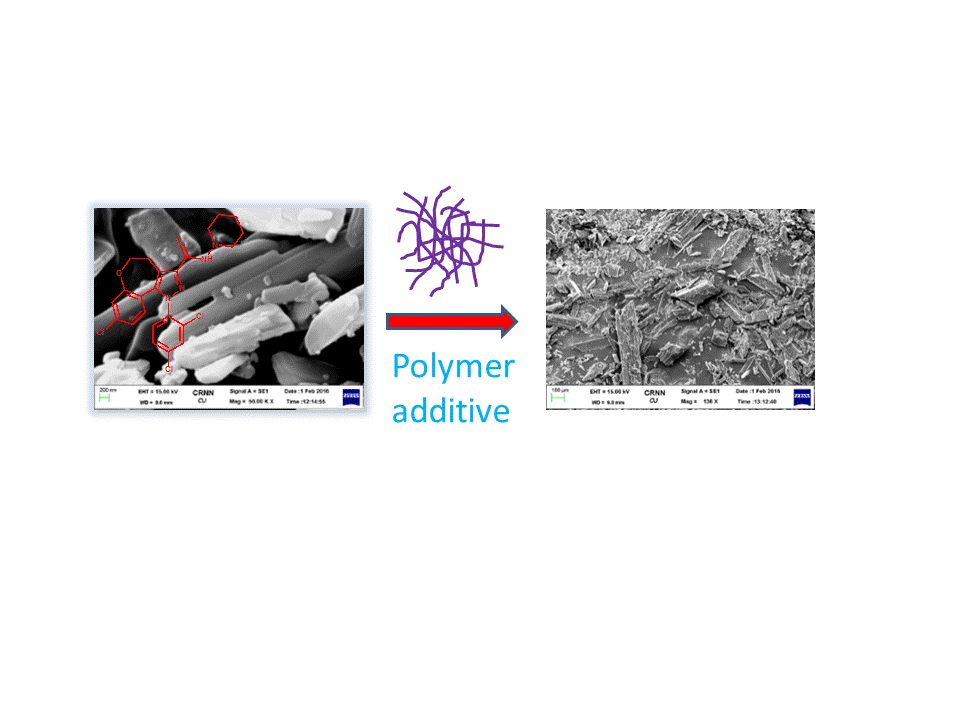
Modulation of morphology and efficacy of new CB1 receptor antagonist using simple and benign polymeric additives
Abstract
The compound 1, [(1H-[1]benzoxepino[5,4-c]pyrazole-3-carboxamide, 8-chloro-1-(2,4-dichlorophenyl)-4,5-dihydro-N-1-piperidinyl], a known CB1 modulator has been synthesized and characterized by IR, NMR and single Crystal X-ray study. The single crystal study of 1 displays a number of halogen bonds leading to 1-D network along with other weak non-covalent interactions. The CB1 modulator 1 inherently possesses extremely low solubility in water, which makes its application as drug difficult, and this may be attributed to multiple halogen bonds present in the crystal structure. A series of polymer additives, which are Generally Regarded As Safe (GRAS), have been explored to investigate whether they can modulate the halogen bond present in 1 through formation of various non-bonded interactions. Surprisingly, these polymers are found to change crystal morphology, crystal packing while retaining efficacy and bioavailability. The polymer molecular weight is found to play a significant role in crystal morphology modification especially in case of polyethylene glycol (PEG). The formation of new polymorphic forms of 1 and modification of halogen bond has been established using powder X-ray diffraction and IR study, respectively, in case of PEG 4000, PVPK-30, PVA polymers and compound 1 adducts.
Keyword(s)
Obesity, CB1 antagonist, crystallography, morphology, in vivo efficacy
Full Text: PDF (downloaded 960 times) PDF (downloaded 960 times)
Refbacks
- There are currently no refbacks.